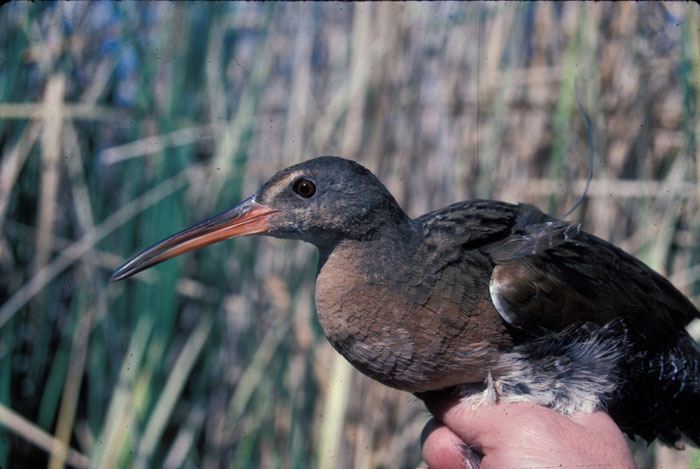Yuma Ridgway’s rail (Rallus longirostris yumanensis) is the only subspecies of Ridgway’s rail found in freshwater marshes. Historically, cattail/bulrush marshes in the Colorado River Delta were the likely stronghold for the species. The virtual elimination of freshwater flows down the Lower Colorado River to the Delta due to diversions from the river for agriculture and municipal uses destroyed that habitat. Existing habitats are primarily either human-made, as are the managed ponds at Salton Sea or the effluent-supported marshes at the Cienega de Santa Clara, or formed behind dams and diversions on the Lower Colorado River at the time those structures were created. This entire habitat is subject to natural successional processes that reduce habitat value over time without also being subject to natural restorative events generated by a natural hydrograph. The greatest threat to the Yuma Ridgway’s rail is that without active management and protection of water sources supporting the habitat, these habitat areas will be permanently lost. Other threats to this species include continuing land use changes in floodplains, human activities, environmental contaminants (particularly increases in selenium levels), and reductions in connectivity between core habitat areas. Reference
Federal Status
ENDANGERED
- Draft Recovery Plan – Revised 2010
- 5-Year Review – 2006
- No Critical Habitat Designated
California Status
THREATENED and FULLY PROTECTED
Survey Protocol
Home Range
Map Data Source: California Wildlife Habitat Relationship (CWHR)
Photo credits: header (cropped) and featured image – Dr. Courtney Conway USGS on Flickr
